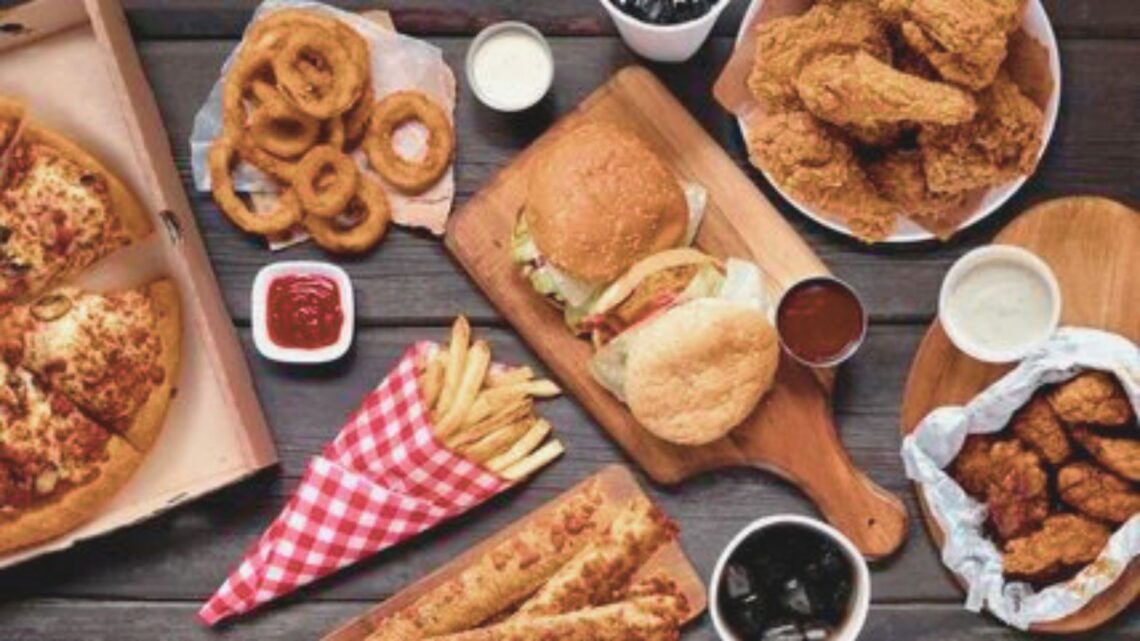Do you know about the evolution of American fast food culture? The first modern fast food restaurant opened over a century ago. From humble roadside diners to the global giants we know today, American fast food culture has transformed the way people eat, work, and socialize. Whether you’re grabbing a quick burger on the go or indulging in late-night pizza delivery, fast food is an undeniable part of American life.
In this article, we’ll explore the origins of fast food in America, its rapid expansion, key innovations, and the latest trends shaping the industry today. We’ll also discuss its impact on society, health, and the economy.
The Origins of American Fast Food
Early 20th Century: The Birth of American Fast Food
American Fast food dates back to the early 1900s when quick-service restaurants began emerging to cater to busy urban dwellers. Some key moments in this era include:
- White Castle (1921): Often credited as the first fast-food chain, White Castle introduced standardized hamburgers, assembly-line production, and affordable pricing.
- Drive-ins (1920s-30s): Car culture led to the rise of drive-in restaurants, where servers (often called carhops) would deliver food to customers waiting in their cars.
- The Diner Boom: Small diners and lunch counters served simple meals quickly, setting the stage for modern fast food.
Post-War Boom: The Rise of Major Chains (1940s-1960s)
The post-World War II era saw an explosion in fast food culture, fueled by economic prosperity, suburban expansion, and automobile travel. This period introduced some of the biggest names in the industry:
- McDonald’s (1948): The McDonald brothers revolutionized the industry with their “Speedee Service System,” an early version of today’s fast-food model. Ray Kroc later turned McDonald’s into a global empire.
- Burger King & KFC (1950s): Following McDonald’s success, other brands emerged, including Burger King (1954) and Kentucky Fried Chicken (1952), expanding menu options beyond burgers.
- The Franchise Model: Fast food chains adopted a franchise model, allowing rapid national and international expansion.
The Golden Age of Fast Food (1970s-1990s)
Marketing & Branding Take Over
By the 1970s, fast food companies had perfected marketing strategies that made their brands household names:
- Iconic Slogans & Mascots: McDonald’s introduced Ronald McDonald, while Wendy’s asked, “Where’s the beef?”
- TV Commercials & Happy Meals: Fast food companies heavily advertised on television, targeting both children and families. McDonald’s Happy Meal (1979) became a cultural staple.
- Supersizing & Convenience: Larger portion sizes and drive-thrus became the norm, catering to an increasingly busy lifestyle.
Global Expansion & Cultural Influence
American fast food chains began expanding globally, influencing food habits in countries worldwide. By the 1990s:
- McDonald’s had locations in over 100 countries.
- Pizza Hut and Domino’s introduced American-style pizza to global markets.
- Fast food became a symbol of American culture and modernization.
Fast Food in the 21st Century: Health, Tech & Sustainability
The Health & Nutrition Debate
As obesity rates climbed, fast food faced backlash for its high-calorie, high-fat meals. This led to:
- Calorie Transparency Laws: Chains began displaying calorie counts on menus.
- Healthier Alternatives: Many fast food restaurants introduced salads, grilled options, and plant-based menus (e.g., Impossible Whopper by Burger King).
- Documentary Impact: Films like Super Size Me (2004) exposed the health risks of excessive fast food consumption.
Technology & the Digital Fast Food Revolution
Fast food brands have adapted to digital innovations:
- Mobile Apps & Delivery: Online ordering, Uber Eats, and DoorDash transformed food accessibility.
- Self-Ordering Kiosks: Many chains now use AI-powered kiosks to streamline ordering.
- Cashless Payments & Loyalty Programs: Contactless payments and reward points encourage customer retention.
Sustainability & Ethical Concerns
Today, fast food companies are increasingly focused on environmental and social responsibility:
- Eco-Friendly Packaging: Many brands are replacing plastic with biodegradable packaging.
- Sustainable Sourcing: Chains like Chipotle and Panera emphasize organic, locally sourced ingredients.
- Worker Rights & Fair Wages: There’s growing pressure for better wages and labor conditions in the fast food industry.
The Future of American Fast Food
Looking ahead, several trends are shaping the next phase of fast food culture:
- Automation & AI – Robot kitchens, AI-powered ordering, and drone deliveries are becoming a reality.
- Health-First Menus – More plant-based, keto-friendly, and organic options are emerging.
- Eco-Conscious Practices – Sustainability will continue to drive menu and packaging innovations.
- Cultural Fusion – Fast food is diversifying, with more global flavors and ethnic cuisines entering the mainstream.
Conclusion
American fast food culture has come a long way from its early days of diners and drive-ins to a tech-driven, health-conscious industry. While it has faced criticism for its health impact, it remains a defining part of modern life, offering convenience, affordability, and ever-evolving innovations.
What’s your favorite fast food trend? Let us know in the comments! Don’t forget to share this article if you enjoyed it!








Leave a Comment